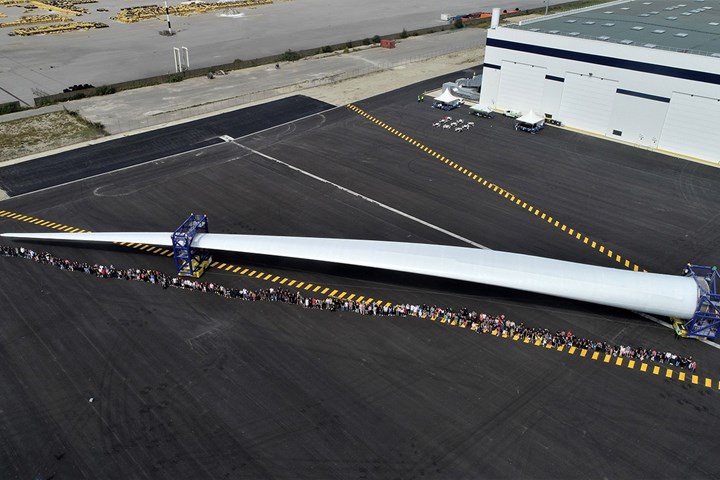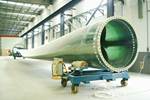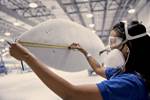ZEBRA project launched to develop first 100% recyclable wind turbine blades
A cross-sector consortium has been brought together to demonstrate the relevance of thermoplastic wind turbine blades, with an eco-design approach to facilitate recycling.

Photo Credit: LM Wind Power
In Sept. 2021, the ZEBRA (Zero wastE Blade ReseArch) project, driven by French research center IRT Jules Verne (Bouguenais), brought together industrial companies and technical centers to demonstrate on a full scale the technical, economic and environmental relevance of thermoplastic wind turbine blades, with an eco-design approach to facilitate recycling. The project has been launched for a period of 42 months with a budget of €18.5 million ($21.8 million).
To accelerate the wind power industry’s transition to a circular economy for wind turbine blades, the ZEBRA project reportedly establishes a strategic, cross-sector consortium that represents the full value chain: from development of materials, to blade manufacturing, to wind turbine operation and decommissioning, and finally recycling of the decommissioned blade material.
-
Arkema (Cologne, Germany), which has developed Elium, a thermoplastic resin, well known for its recyclable properties by depolymerization or dissolution. This resin will be used in the ZEBRA project.
-
The project will benefit from R&D center ’s (Pessac, France) expertise on polymer formulation, carbon fiber development and polymer recycling. CANOE has recently developed an innovative recycling process of fiber-reinforced acrylic composite material by dissolution method providing what is said to be a high added-value recovery of both separate recycled methyl methacrylate monomer and recycled fiber.
-
(La Défense, France) is a wind farm operator, with 8.5 gigawatts (GW) under management, with more than 2.6 GW of installed capacities. Its purpose is to act to accelerate the transition towards a carbon-neutral economy, in particular through the sustainable development of renewable technologies.
-
(Kolding, Denmark) designs and manufactures wind turbine blades, with more than 228,000 blades produced since 1978. The Cherbourg factory associated with the ZEBRA project has produced what is said to be the largest blade ever manufactured at 107 meters in length.
-
Owens Corning (Toledo, Ohio, U.S.) specializes in the field of glass fiber and composite elements and is the inventor of patented high-modulus glass technology.
-
(Paris, France), which helps cities and industries to intelligently and sustainably manage their resources, brings its expertise in the eco-design of the materials used and in the best recycling techniques
Within the ZEBRA project, LM Wind Power will design the product, process and manufacture two prototype blades using Arkema’s Elium resin, in order to test and validate the behavior of the composite material and its feasibility for industrial production. In parallel, the ZEBRA project partners will focus on developing and optimizing the manufacturing process by using automation, to reduce energy consumption and waste from production. Project partners will then explore methods to recycle the materials used in the prototype blades into new products. Finally, a life cycle analysis (LCA) will assess the environmental and economic viability of further using the thermoplastic material in future wind turbine blades.
Related Content
-
Watch: A practical view of sustainability in composites product development
Markus Beer of Forward Engineering addresses definitions of sustainability, how to approach sustainability goals, the role of life cycle analysis (LCA) and social, environmental and governmental driving forces. Watch his “CW Tech Days: Sustainability” presentation.
-
Airbus works to improve the life cycle of composites in future aircraft
This companion article to CW's September 2024 Airbus Illescas plant tour discusses recycling, LCA, biocomposites, Fast Track technologies, qualification and more.
-
European boatbuilders lead quest to build recyclable composite boats
Marine industry constituents are looking to take composite use one step further with the production of tough and recyclable recreational boats. Some are using new infusible thermoplastic resins.



